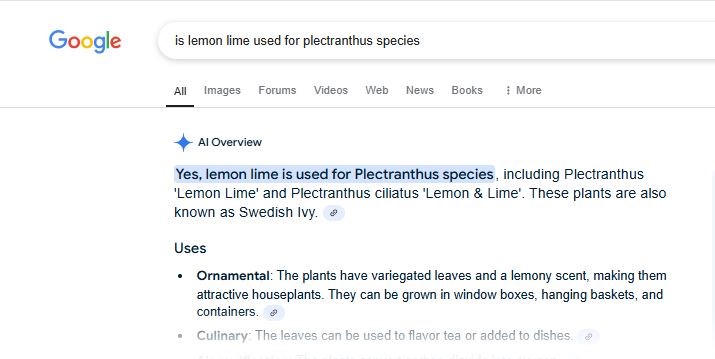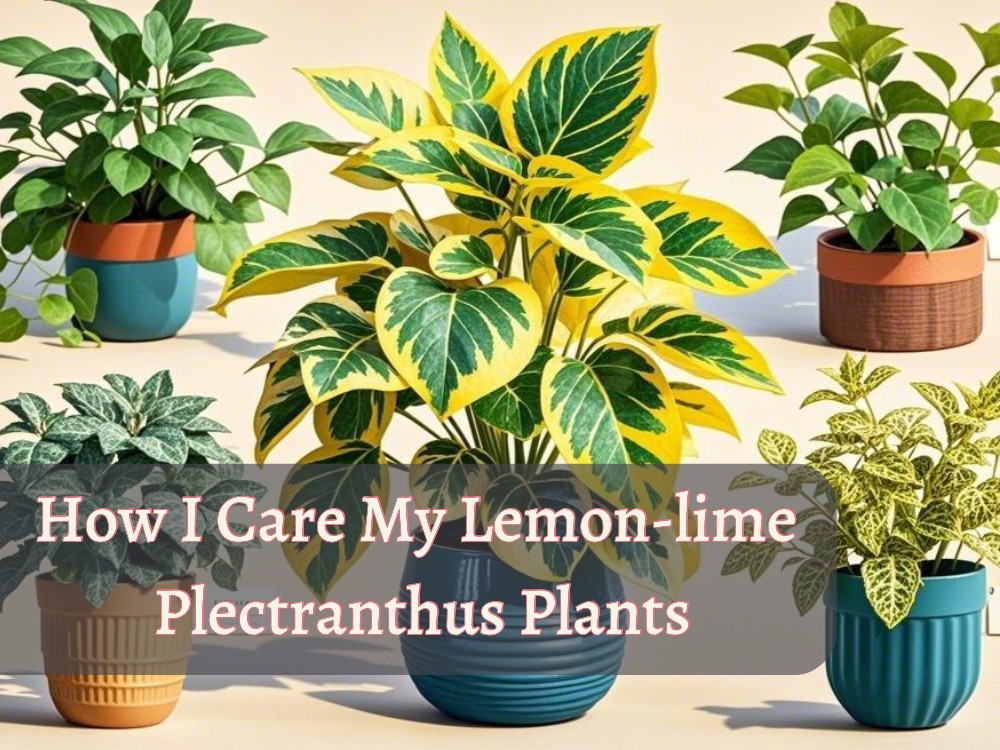How I Care My Lemon-lime Plectranthus? Do you know which lemon lime you have to care about? According to my research, many species from the Lamiaceae family and the Plectranthus genus are considered lemon-lime due to their same physical properties, such as lime green and variegated leaves.
Lemon lime Plectranthus is not a scientific term, but rather, it is a common name used in trade to identify easily.
📌 Note:
I have researched this information and found many species of Plectranthus known as the lemon-lime and Swedish ivy due to similar physical and lemon scent properties. It may also apply to other genera of species or cultivars. However, I do not guarantee only this information. So, if you have any knowledge about this concept (Lemon Lime Plectranthus), please let me know so that you and I can understand. Thank you!
In this context, we will explore popular species from the Lamiaceae family, especially the Plectranthus genus, which has properties like lemon-lime.
Here you can see the google results in the following image;

Is Lemon Lime Plectranthus a Specific Species?
As lemon-lime is just a common name used for all species, having lime-green leaves with citrus and lemony scents, I hope you are unfamiliar with the original scientific name for your lemon-lime Plectranthus.
There are many Plectranthus species known as the lemon-lime:
- Plectranthus ciliatus ‘Lemon Leaf Variegated’
- Golden Lemon Swedish Ivy (Plectranthus verticillatus ‘Golden Lemon’)
- Plectranthus forsteri ‘Lemon & Lime’
- Plectranthus madagascariensis ‘Lemon Twist’
- Plectranthus oertendahlii ‘Lime Light’
- Plectranthus amboinicus ‘Variegated Lemon’ (also known as Cuban Oregano)
- Hemizygia ‘Lemon Lime’ (Cousin of Plectranthus from Syncolostemon genus)
All of these species, which share the name “Lemon Lime” look similar due to their bright and shiny leaf color (lime green or yellow-green), slight variegation, and radiant light reflection. Most are either trailing vines or ground covers, making them ideal for ornamental use. Some species also have a light herbal scent, but the most striking similarity shows their shiny leaves and fresh, vibrant appearance.
Which Lemon Lime Plectranthus Do You Have?
I haven’t found a distinctive lime Plectranthus specifically. Still, The word lemon-lime is not only used for Plectranthus species but is also applied to other genera, such as Hemizygia lemon-lime from the Syncolostemon genus.
Here, I am sharing some hints to help you identify which lemon lime plectranthus you have.
By the way, I do not have these plants, but the following information about the texture of each species is based on online resources. So, reality can vary!
1-Plectranthus ciliatus ‘Lemon Leaf Variegated’
Lemon Leaf Variegated cultivated from Plectranthus ciliatus, having oval leaves with serrated edges.
The leaves are dark green inside and have a light yellow or creamy tinge on the edges.
Its surface feels slightly rough and velvety because it has fine hair.
2-Golden Lemon Swedish Ivy (Plectranthus verticillatus ‘Golden Lemon’)
Golden Lemon is a special variant of Plectranthus verticillatus, recognized by its distinctive leaves, with light green to golden yellow, having a prominent yellow tinge along the edges.
The leaves are soft with rounded or slightly oval, while the surface feels slightly shiny.
3-Plectranthus forsteri ‘Lemon & Lime’
Lemon lime is from Plectranthus forsteri along oval leaves with light creamy-white or yellow edges and a light green or bright green center.
The texture of the leaves is slightly soft and slightly velvety, which feels pleasant to the touch.
4-Plectranthus madagascariensis ‘Lemon Twist
Lemon Twistsy is a variety of Plectranthus madagascariensis, consisting of round and oval with slightly wavy edges, which are smooth but feel slightly fuzzy.
A variegated texture, where the edges of the leaves are a light creamy white or yellow while the center is dark green.
5-Plectranthus amboinicus ‘Variegated Lemon’
Variegated lemon is a variety of Plectranthus amboinicus with thick and succulent leaves along creamy white or pale yellow edges and a dark green center, making it unique.
Its oval and heart-shaped leaves have a velvety fuzz, and when touched, they release a strong oregano-like aroma.
6-Plectranthus oertendahlii ‘Lime Light’
Lemon light from Plectranthus oertendahlii piece of Plectranthus has a light-green color and bushy growth.
Its leaves can be heart-shaped, medium to large, with a bright lime color.
The leaves have a soft, velvety feel, while the stem becomes redder or more purple as they mature.
How do I care for My Lemon Lime Plectranthus Plants?
Indeed, each variety requires specific care and maintenance. However, I have written down a general care guide for those species.
I would like to hear about your authentic experience with the above plectranthus species and their cultivators, which have properties like lemon-lime.
Just understand that your opinion ensures accurate information for all of us.
Creating The Right Environmental Conditions for Lemon Lime Plectranthus Plants
First, we will consider environmental factors that directly affect any plant to understand which climate conditions are best for the above seven popular varieties of Plectranthus species.
